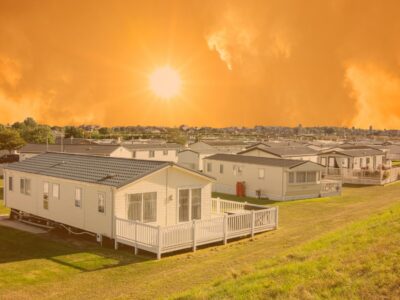Where Does California Stand On Managing Vehicle Pollution?
4 stories to watch as policymakers aim for cleaner air and safer streets
While California has been a decades-long leader in technologies and policies to reduce smog from cars, the state has in recent years been seriously ramping up efforts to simultaneously deliver cuts to vehicle carbon emissions, one of the state’s most stubborn climate policy challenges. Vehicle pollution poses both long-term risks for climate change and immediate public health hazards. This summer, air quality monitors in the LA region registered smog levels in excess of federal standards for 87 days straight this summer, between June 19 and September 14, 2018.
The last few weeks have seen several California announcements on transportation emissions:
- California Air Resources Board extended its innovative Low Carbon Fuel Standard, doubling the most recent target to require a 20 percent reduction in carbon intensity in vehicle fuels by 2030;
- CARB announced funding for 11 zero-emission freight My colleagues Ethan Elkind and Nat Logar recently summarized broader policy solutions available;
- Governor Brown signed SB 1014, directing state agencies to adopt and implement annual targets and goals for rideshare companies to reduce their greenhouse gas emissions on a passenger-mile traveled basis. Read Legal Planet analysis;
- The state’s landmark SB100 focused on cleaning the electric grid, but in signing the bill, Governor Brown adopted a broader ambition for a carbon-neutral California economy by 2045, including transportation;
More action is on the way. CARB is holding hearings on the Innovative Clean Transit measure that would require all the state’s bus agencies to eliminate fossil fuel powered buses by 2040.
But the path to an emissions-free California vehicle fleet is not straightforward. Here are several stories to watch on clean transportation policy in the coming year:
Can California maintain strict regulations for vehicle emissions in the face of a Trump administration plan to weaken federal rules?
My colleagues have extensively covered the Trump administration’s vehicle emissions proposal and its legal weaknesses. On Sept. 24, my colleague Meredith Hankins testified in Fresno alongside CARB Chair Mary Nichols and Attorney General Xavier Beccera at one of three joint EPA/NHTSA hearings on the proposed rulemaking. Also at the hearing, delivered testimony opposing the federal proposal.
On Sept. 28, CARB took action to ensure that vehicles sold in California must meet the state’s strict standards for emissions. The comment deadline for the new federal rules is October 26, 2018. 17 states, including California, already sued the federal government back in May over its decision to abandon the Obama-era standards, and more litigation is sure to follow once the new, weakened federal standards are finalized. The conflict between California and EPA over the state’s waiver will likely reach the Supreme Court in the next few years.
What should be on the new CA governor’s agenda to slash transportation pollution?
To achieve the state’s new economy-wide carbon neutrality goal by 2045, state leaders will need to develop a coherent agenda to cut pollution across all parts of the transport sector: air, rail, cars, freight, buses, and more.
Gavin Newsom’s campaign site emphasizes pollution from freight, promising a goal of zero diesel pollution by 2030, with upgrades at ports and an electric transit system. Newsom pledges to support California’s goal of 5 million electric vehicles on roads by 2030. High Speed Rail is not mentioned on Newsom’s campaign site, but the candidate has recently voiced support for the project.
In his policy agenda, Republican candidate John Cox emphasizes opposition to the gas tax, opposes High Speed Rail and suggests California can make better investments in roads, highways and transit. Cox suggests several strategies to increase funding for transportation projects.
In a KQED gubernatorial debate this week, Newsom and Cox sparred over the gas tax, funding for road repairs and how SB100 would impact electricity costs, but neither expressed a broader vision for the future of the state’s transport system.
Can Los Angeles create safe streets for pedestrians, cyclists, e-bikes and e-scooters?
Mayor Garcetti’s office recently announced a new collaboration on electric vehicle purchasing and the city is pressing forward on 28 major transit projects. But how do these programs connect to safety and infrastructure for the lowest-polluting, and most vulnerable, urban commuters on bikes, scooters and foot?
The city is in the midst of a contentious roll out of new e-scooter and electric bike technologies, with a heated public debate over safety risks for pedestrians when scooters and dockless bicycles block sidewalks and for users who share roads with speeding cars.
At a conference in LA last week for city transportation officials, Mayor Garcetti faced protests from street safety activists arguing the city was not doing enough to protect cyclists and pedestrians on streets that favor motorists. The city has committed to eliminating all traffic deaths in the next seven years.
One new city commitment points to future LA streets with better safety and less pollution. In September, Los Angeles, West Hollywood and Santa Monica joined 23 other cities in signing the Fossil Fuel Streets Declaration, committing not just to procuring only zero-emission bus purchases by 2025, but also to developing policies friendly to pedestrians and cyclists and reducing the total number of vehicles on streets.
Do cultural institutions ramp up support for low-carbon transport?
Institutions in the arts, recreation, business, sports, healthcare and others are essential partners in leading the state towards cleaner transportation. This state’s first Clean Air Day, organized by the Coalition for Clean Air on Oct. 3, 2018, is a novel example of cross-sector collaboration, with more than 160 organizations joining the campaign.
The Los Angeles Philharmonic celebrated its 100th anniversary on Sept. 30 by joining forces with CicLAvia for a tour-de-force street festival, opening sections of the city’s iconic and oft car-clogged streets to Angelenos on foot, bicycle, skates and other non-motorized means for a day of free-wheeling and live music between the Hollywood Bowl and Walt Disney Concert Hall.
Sports teams can also contribute. Dodger Stadium and LA Metro made several recent improvements for pedestrian and bus options, including free shuttles from Union Station and the Harbor Gateway Transit Center to the ballpark. Recent proposals like the gondola or the Boring Company tunnel would move some of the stadium’s capacity on gamedays but the team can go further to support clean transportation.
The 2028 Olympics in Los Angeles is also serving as an important rallying point, with Mayor Garcetti and LA Metro connecting the blockbuster cultural event with major improvements in transportation infrastructure, in line with Metro’s Vision 2028 Plan. During the 1984 Olympics, the city made tremendous (if temporary) strides at reducing transportation congestion and pollution.
One story to watch this year is whether LeBron James continues his support for urban cycling, which he championed in Cleveland. Two intrepid Los Angeles Times reporters tested the basketball star’s commute from Brentwood to Staples Center, encountering several obstacles to safe passage.
Transportation pollution is one of the most challenging sectors for California to address. Managing and reducing pollution from cars, trains, buses, and planes will require creativity, initiative and collaboration from all our leaders.








Reader Comments